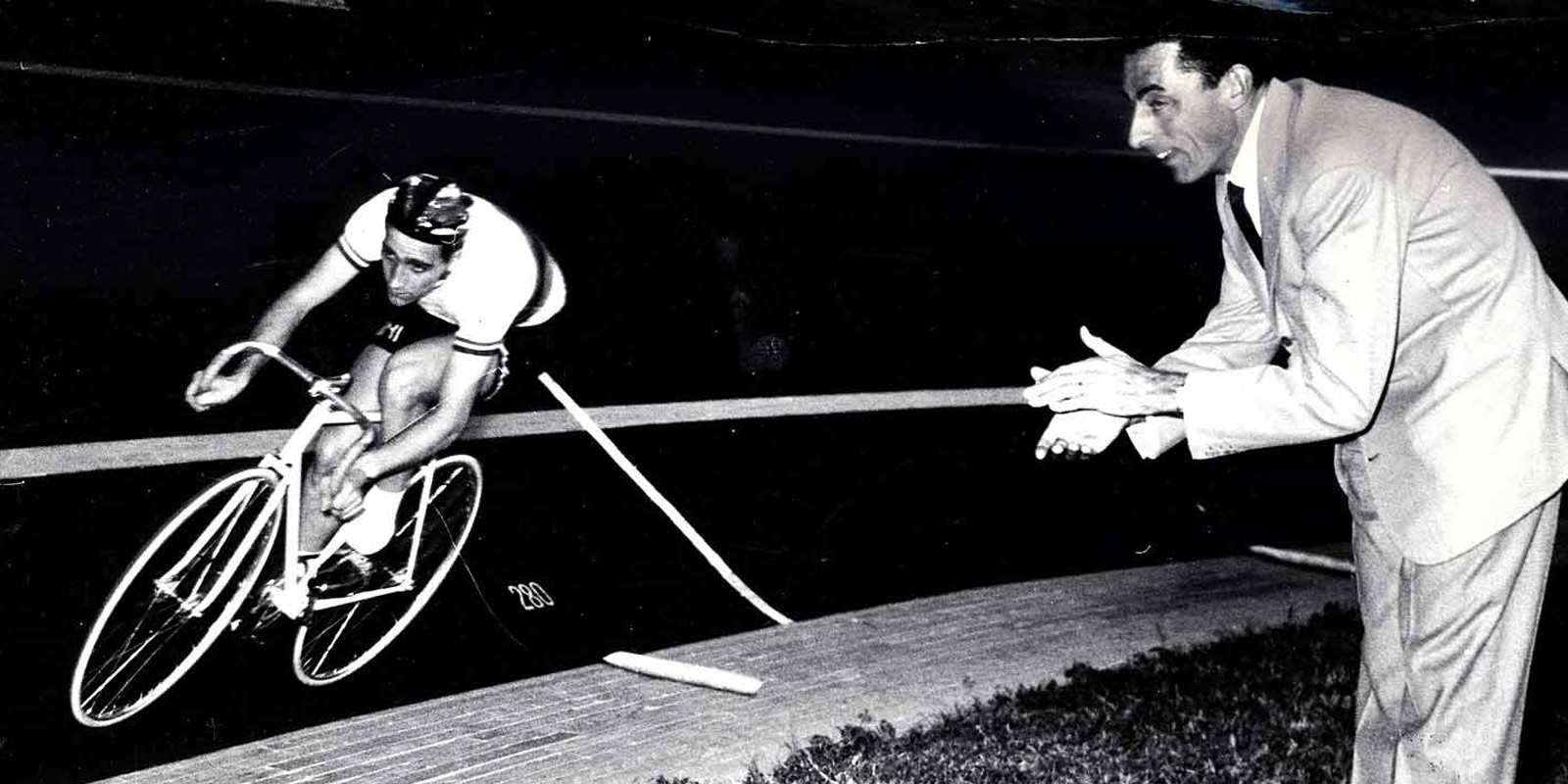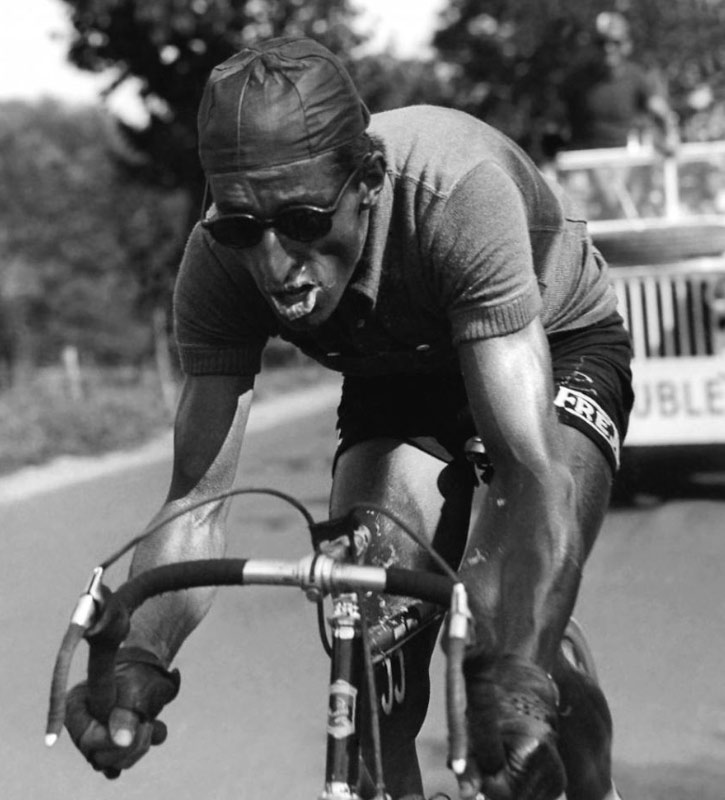"He won the Stage 6 time trial … with silk tyres and jersey to match… and a 56-tooth chainwheel”.
Silk tyres and a jersey to match? Who wouldn’t aspire to such class on a bike. If ever there was a cool mise-en-scene of Eddy Merckx’s prowess that quote, reported by Cycling Weekly during the 1975 Tour, might be it.

But the Cannibal was not the pioneer of silk as the fabric of choice for aerodynamic gains. It was used over 20 years before, especially on the track. Frenchman Roger Rivière was a big proponent of the advantages of silk. He won the world professional pursuit title in 1957 his first year as a professional. The next year, he repeated his win in Paris wearing a silk jersey and shorts combination, together with an early derivative of the aero helmet covers we see today. And in the same season he took on the hour record, pushing it up to 47km/h on the Vigorelli track in Milan - an effort that remained unbeaten for nine years.
As Pierry Chany wrote, he nearly abandoned that attempt due to the wind blowing across the velodrome, “his entourage measured the strength of the wind: matches blew out and the smoke from cigarettes stretched out horizontally.” But eventually Roger appeared ready to go. “He was wearing a helmet covered in nylon, varnished shoes and a world champion's jersey made of silk.” Meticulous preparation wasn’t evented by the modern era.
Picture above: Rivière being cheered on by Coppi, also a proponent of the silk skin suit.

The advantages seen, or at least perceived, on the track were eventually transferred on to the road, usually for use in time trials
For Ferdy Kübler, the use of a silk jersey in the individual time trial during the 1950 Tour de France both gained and lost him time. Kübler was known as an impetuous rider, who sometimes rode with his brawn rather than his brain. That year he had started the Tour steadily, placing inside the top ten in the first two stages and sitting ninth overall going into the stage six race against the clock. As a time trial specialist, he won the stage taking at nearly three minutes on his closest rival and moving into third place on the general classification.
But his gains were cut as incredibly he decided to stop, mid-stage and exchange his traditional wool jersey for a silk one. The commissaires were not impressed and he was later penalised 25 seconds for discarding the regulation jersey.


However the choice between wool and silk did not have to be black and white. In 1960 and Spanish racer, Guillermo Timoner seems to have pre-empted our Louise jersey by more than 60 years. He choose to mix wool and silk for UCI Motor-Paced World Championships as “The wool picked up some of the turbulent air coming off the back of the motorbike, so would pull me along because I sat quite upright, and the silk smoothed the airflow over my back.”
Guillermo plied his trade on the track and it was on the boards where the silk jersey is perhaps most well known. Riders pinned their jerseys until they were skin tight. It became part of the culture that lives on to this day in Six Day racing. Added to the aerodynamic benefit was the fact that silk dried better than wool in the heat and humidity of the velodromes.
As Cycling Weekly reported “silk is lighter than wool, it holds its shape better, and it takes colour well. Silk jerseys proved lighter, brighter, and crucially, faster.”

And that was the case during that time trial won by the Cannibal in the 1975 Tour. It was the year that he famously showed weakness two days after being punched in the torso by a spectator. But before then he demonstrated his trademark strength with a setup whose description bears repeating; “… with silk tyres and jersey to match… and a 56-tooth chainwheel”.
Our Louise jersey takes the creative thinking of the pioneers on the track and the road during the 50s and 60s and blends silk and merino wool, two of nature's finest fabrics, for ultimate thermoregulation, softness and stability. Take some material gains for this summer's cycling.

